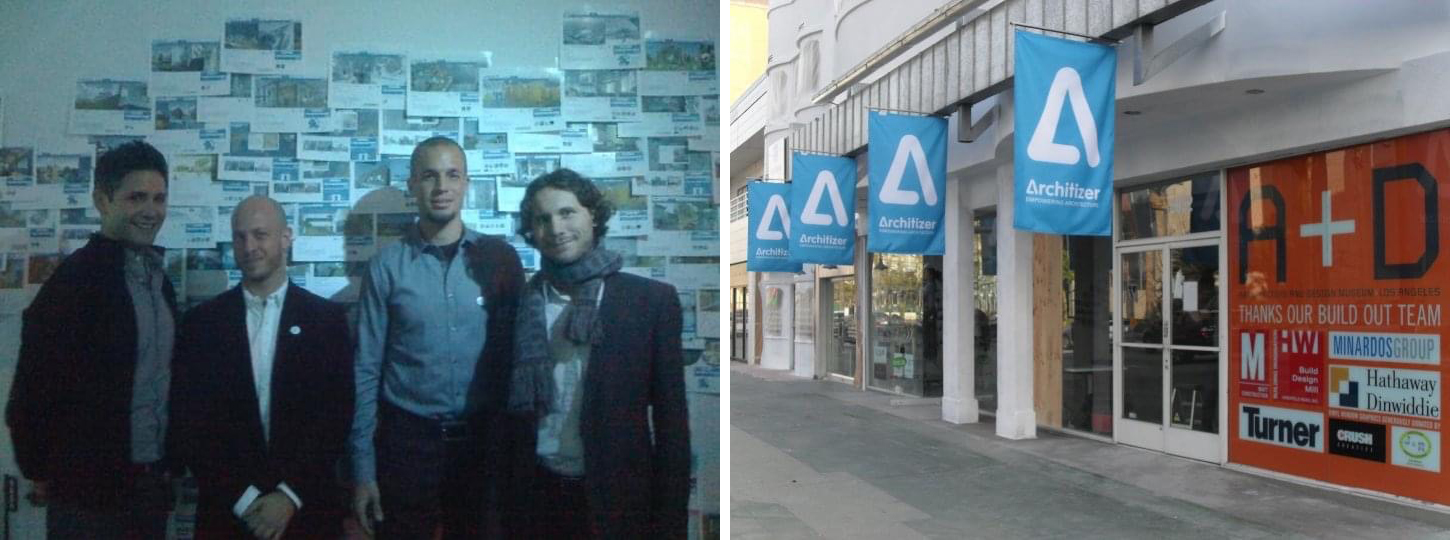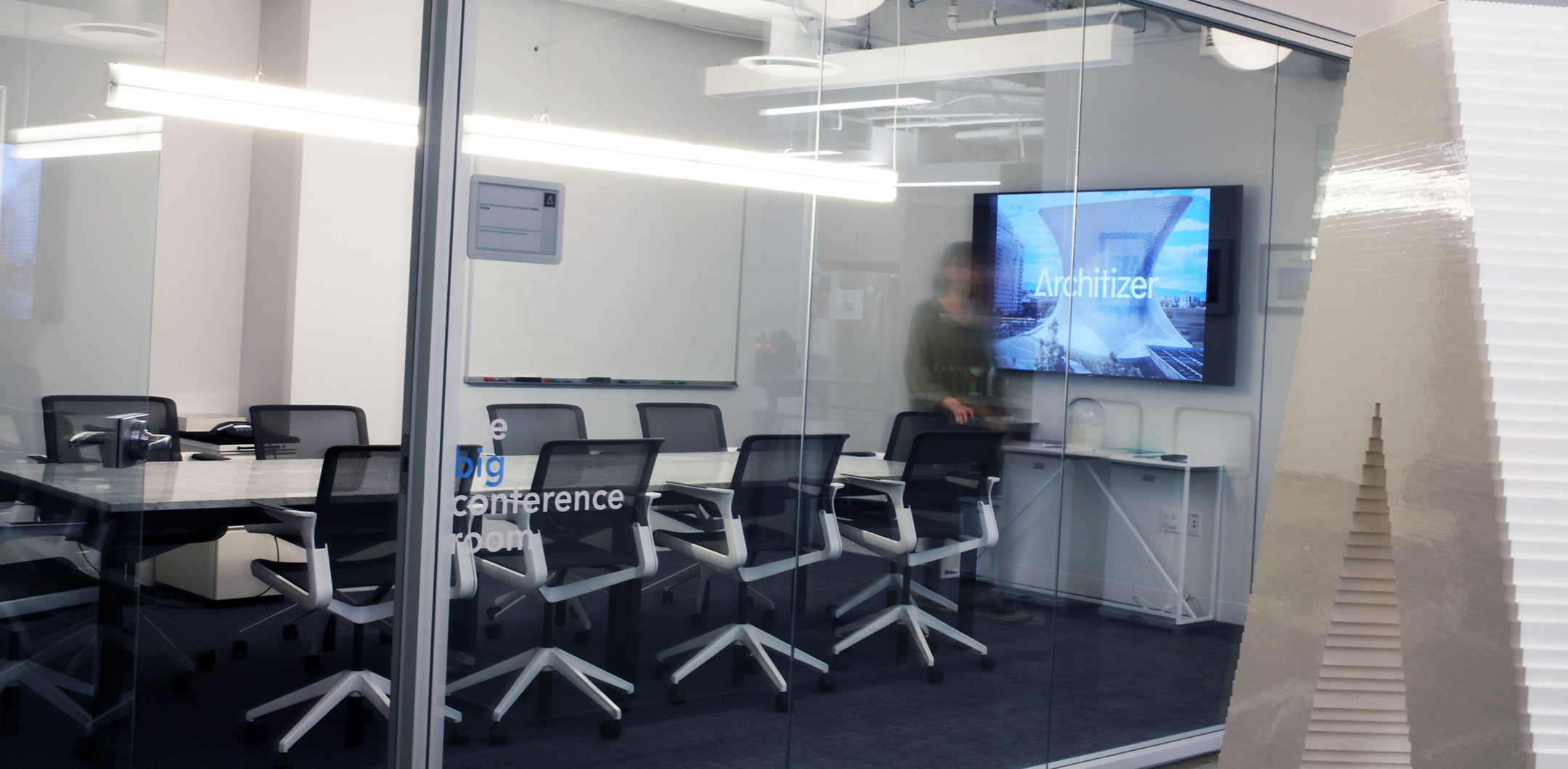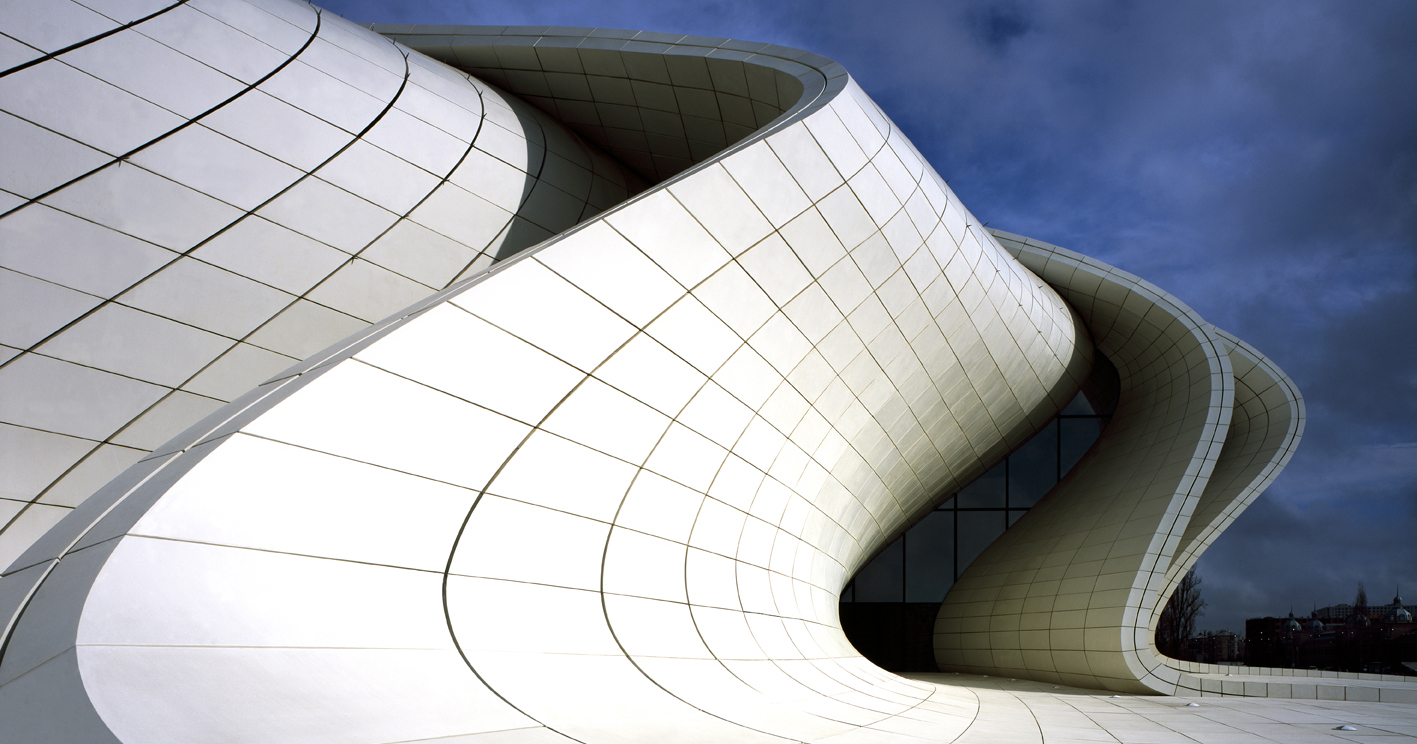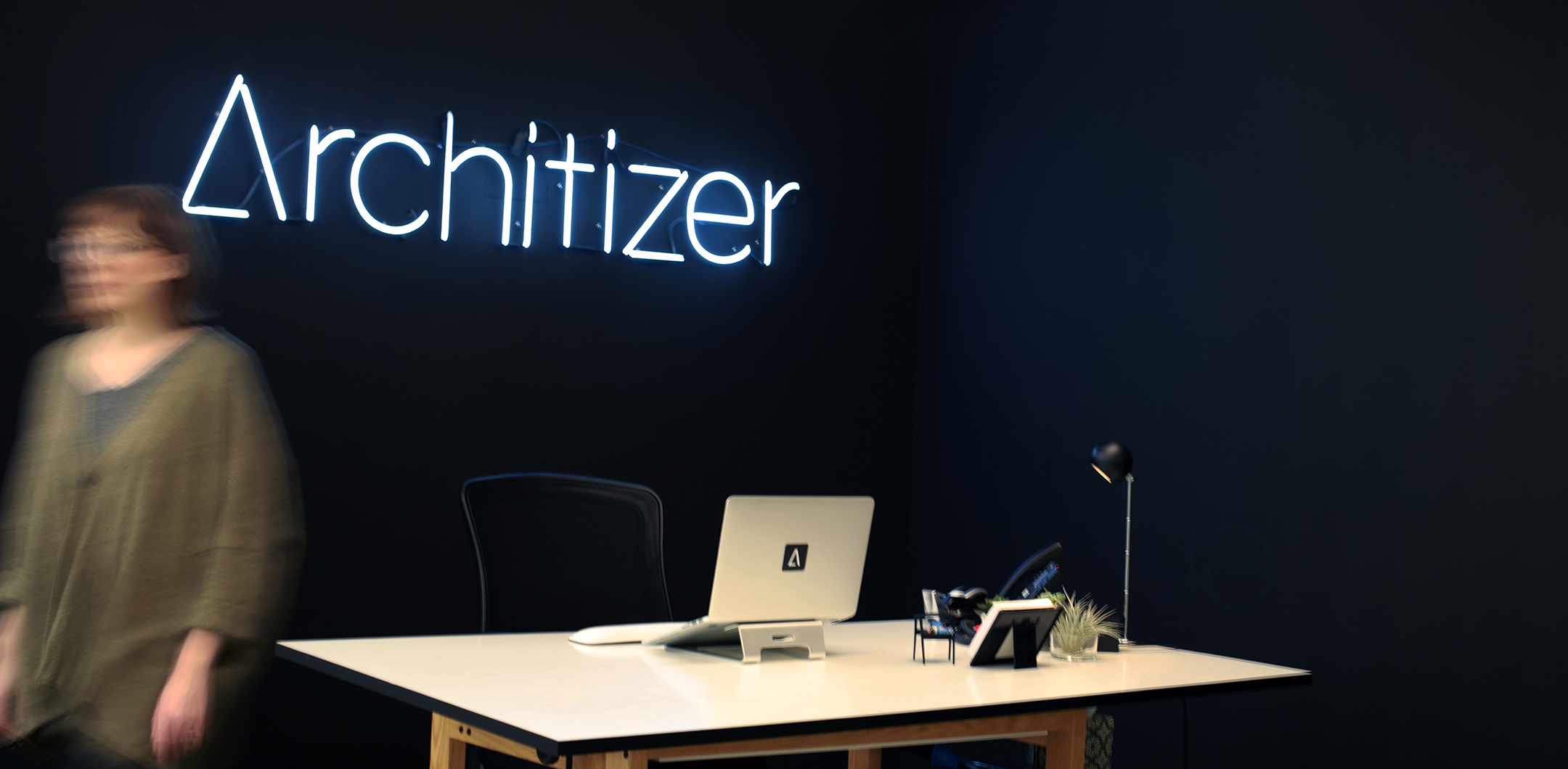In June 2022, Architizer was acquired by Material Bank, the world’s largest marketplace for architectural, design, and construction materials. Material Bank’s acquisition of the platform represented an exciting new step for Architizer. Currently led by David Weber, Architizer was founded in 2009 by Alex Diehl, Matthias Hollwich, Marc Kushner, and Ben Prosky with a mission to help architects build better buildings, better cities, and a better world.
As it embarks on this new path forward, Architizer will remain grounded in the central values that it was founded upon. For this reason, we are using this momentous occasion to look back on the founding of the company. In this four-part series, we ask each of Architizer’s founders to reflect on foundational philosophies and to share stories about the early days of the platform.
In this interview, we sat down with Benjamin Prosky, Executive Director, American Institute of Architects New York | Center for Architecture.

Ben with Winka Dubbeldam in front of the Architizer flag at at a launch event in the Bauer Hotel in Venice.
Hannah Feniak: What was the original goal of Architizer when it was founded? What led you to join the founding team of Architizer?
Ben Prosky: Essentially it was 2008. I was working at Columbia. I was sort of big public outreach person for the School of Architecture, GSSAP. Then, of course, the economy crashed and there really wasn’t very much work for architects… Marc and Mattias, who had just founded their young firm amidst a recession, noticed that architects don’t have great websites and they don’t have a lot of money to found good websites.
Social and professional media were emerging at that time and weren’t visual enough. LinkedIn was already a thing, but it didn’t work well for architects because it is really about resumes. Meanwhile, architects want to be known through their work and beautiful visuals… Then, even if you did have a good website, who was finding it? How did would your website be discovered if you were not a big firm? Instagram wasn’t a thing yet. Facebook was more social and wasn’t as public then. So, as a young firm who didn’t have any work of their own, they asked: how do we get known? How do we help other people get known? How do we help?
Beyond that, how do we get recognition for work that we worked on? So maybe we interned at a firm or we worked as a junior person. Even though you don’t author of the whole building yourself, you have a right to say what you did on it. And that was also something that really never came through anywhere. There was never a spot for that. If you had a resume, you could list that there. The idea of Architizer was to create this social and professional networking site where the image was privileged. People would create profiles and firms would create profiles, but really it would become the largest database of images about architecture, and those images would be connected to people and their work. And that was the idea: to help people get known through their own work, their own authorship of the work, and the images they chose to represent the work.
So, how’d I get involved? Actually, Marc, Mattias and I all met at the same time. Jürgen Mayer is really the godfather of Architizer. He knew us all and linked us all together, even though Jürgen was in Berlin… And then Marc and Mattias did this BMW mini pop-up with Alex Diel, and he was really entrepreneurial and of course had this creative agency that could do all this digital stuff. That’s how the four of us came together. Alex could provide the actual technical background and create the whole thing. Marc and Mathias, being young architects, were the profile of the type of firm — the user case scenario — and could advise on the look and feel. My role was answering: how do we how do we position this? How do we get this out to the public? Who can we get signed up?
So, we did this whole countdown for when we went live, thinking that if certain people and profiles and firms had already uploaded, who could resist” My job was to put together a mega list of who could we get — everything from Liz Diller to Frank Gehry partners to Zaha Hadid to younger firms at the time like ANArchitects or Hower and Yewn. The goal was that we have a top 100 so that when we went live, there would already be a certain critical mass of images and influential firms there. So, the original idea was create profile, and why wouldn’t you create a profile if Gehry and Partners already had one?
Once it went live, we realized that websites are really hungry creatures. Originally, there was an idea that people are going to post, and every time you get Diller Scofidio to join, they’re going to post the picture that will be on it. But then we realized that you’ve got to write news. People were getting excited we realized we had to constantly provide content. I started this kind of curators pick corner with what’s going on in the world, which soon became impossible to keep up with because I had a full time job. So, Ryan Quinlan became our first intern, and I would write a weekly sort round up of like lectures and exhibitions that were going on and things like that.
We were coming out of an era where the architecture magazine and the monograph reigned supreme… People used to buy these magazines and monographs to get pictures, they’d have these libraries because they wanted ideas. Suddenly, the Internet was out there, but the collection of architectural images was not sufficient. Sure a magazine is hungry, but then it gets published and you have a whole month to get new content. A website is more of an every day thing where you won’t go back if there isn’t something new every day… So we quickly realized it had to be a publishing mechanism not only by people who are building sites but also offer news and so on. There was also this idea driving us that it would be a place that you go for inspiration and to find work that you wouldn’t find in the monographs and magazines. This was that intermediate era where there still were plenty of magazines out there.
What is like one of your favorite memories from the early days of architecture? We hear that there were really epic parties!
I think that my favorite early memory was when it started to have an identity. We were creating this thing and finally that little a logo came out — it was funny light, powder blue with chamfered edges. And then there was this countdown to when the site would live — as if there were all these people waiting in front of their monitors for it to go live. The daze — “Can we get can we get REM Koolhaas’ firm OMA on the site? Who can we get to upload photos? Oh my god, we got OMA on it!”
Before it ever went live, I remember this excitement of what it was going to be once it got out there. I remember checking in on the Live Day: How many people are visiting and are people uploading their own profiles and who are we hearing from? That was really exciting. And we had a little office and we were still a group. So, I think what it was to birth the website and what it actually meant: Would anybody be looking or would everybody be looking?
We quickly realized that websites also need connection to people, in real space, to be a thing. So, Architizer couldn’t just live online. You couldn’t just go to the website and have this experience; instead, come to an event. Architizer became this brand and we went crazy with these launch parties to connect people… If you come to a website that can draw a great crowd and be in a cool space, then that website is buzzed.
One or two that I have to say stand out? The one at the Venice Architecture Biennial, which we did with Felix Bircher, of Pin-Up a magazine and Winka Dubbeldam of Archi-Tectonics. We were these three entities like Winka and Pin-Up, and we managed to get the little nightclub at the Bauer Hotel. Our blue Architizer flags — which we’d carried in our own suitcases and put up ourselves — were on the outside of the Bower Hotel in Venice.
There are two that are epic in my mind. We did one at the Old Design Museum in London on the rooftop, right on the Thames. There was a terrace, and it happened to be a beautiful day. And then we got to do one in Tokyo…in the Mori Tower. We got an afterparty with the PechaKucha guys, they had a bar and it was sort of like crazy. The Architizer flags were in Tokyo, and there were all these Japanese architects, young Japanese architecture students who knew of us, knew of Architizer, and came out. It was at a scale where we could throw a party and people came, and that was really cool.
Also, the little first one here at the Storefront for Art and Architecture was the very, very first launch party. We worked with the head of Storefront, Joseph Grimm. They gave us a space. We had little boxes that we got up and said the Architizer manifesto as loud as we could. So yes, these parties were great…we would sort of get in touch with all the people and we were still smaller — we weren’t a big corporate thing.

The four founders — Marc Kushner, Ben Prosky, Matthias Hollwich and Alex Diehl — at the Architizer Launch Party in L.A. at what was formerly the L.A. Architecture Museum (it has since been demolished to make way for a metro entrance). The images on the wall are print-outs of firm profiles from Architizer.
How do you feel now that you’ve transitioned away from Architizer; have your experiences founding the company informed your work at the AIA?
Founding Architizer was really an important part of my professional development because it really diversified it. I have always worked for large institutions that are more on the curatorial or academic side, and when I co-founded Architizer, it was one of the most entrepreneurial things I’d done. There was no big institutional structure like Columbia or Harvard or the Canadian Center for Architecture to frame it… and so it presented this challenge. How do you do really proactive, brazen outreach? How do you just tap into your networks to get the word out and get known for an idea?
I think that energy is sometimes missing in these big, important institutions because they have these networks and ways of doing things. I was already known in the institutions I’d been at as someone who was convener — an inviter. To be known for co-creating something and getting it out there was a new thing. After I stepped away from the day to day of our Architizer, I became an Assistant Dean of the GSD. As an administrative dean, my departments were the communications and outreach…the magazine, the website, the events, the lecture series, the publications and the exhibitions. I know what attracted Harvard to me and me to Harvard was that I had had this institutional work background, but then I suddenly had this entrepreneurial experience.
Now I’m at the AIA where I’m the head of the New York chapter. We’re the largest and the oldest chapter with over 5000 members, but the members run from people who are right out of school to people who either have huge firms like SOM or are sole practitioners… At the AIA, we have firms that range in experience. It’s so important to understand how they’re received; how they get the word out, what they’re known for — and if they are known for the things they want to be known for, and understanding what it takes in the back end to kind of craft that narrative and how much control you may have or not have over it. I think the Architizer of our experience was just integral to that.
What are your thoughts on architecture becoming part of the Material Bank family?
I think it’s great that Material Bank has emerged doing something that everyone needed or needs but in a really efficient way. They’re reducing waste, creating efficiencies and re-using and recycling. Architizer always needed to figure out what its business model was and part of it came down right this — materials. We wanted to help connect people in their specs, but Material Bank really did a great job, they went above and beyond. The idea idea of the huge database we created being married with a company that really knows how to actually, physically reach people with design objects and specs and so on, makes a lot of sense. The story will still be about how powerful the images of designs are and how powerful a network of architects is — not only to suppliers but to each other. These are the things that I do think we really nurtured with Architizer and that will be of value as part of this bigger group.
What do you think the future holds for you or where you’d like to see yourself going?
Well, it’s a circular thing. I was trained in architectural history theory and then urban planning, and I always loved architecture and design. But, I remember that my professor in undergrad, who was an architectural historian, said to me: “You have to resolve your relationship with architecture.” He was right — either you’re going to create it or you’re going to be part of this machine that actually helps to put it out in the world and create value and understanding. Oftentimes, the people who do this are not actually trained as architects.
To circle way back, much of my work at the AIA really is that same marriage of helping a community of architects work out its issues while also considering how their work is presented in the world. How, when laws change, do we advocate for what architects can do in the realm of sustainability? How is the role of architects in resolving social issues defined? So, in many ways, this is always informed by that earlier outreach work.
The part of my work that I’m now most engaged with is really about public advocacy. I’ve gotten to sit on the commissions appointed by the mayor to advise on certain issues, and I do this on behalf of the community. I think that this is a newer aspect to my work: not just being known but being politically relevant and actually helping architects shape the kind of world that they want and that others would want. This not only includes sustainability laws, but also creating opportunities for people in architecture who have not previously had them, or who have not seen architecture as being something helpful to them. How do architects not simply design public housing, but also create avenues for them to deeply understand the needs of the communities in the public housing? That is to say, publicly working out why we need to actually advocate for more of it — not just because we want to design it, but because we want to be trusted by the people who need it.
People have to trust architects to create that world with them, and in order to do that, architects have to be really savvy at speaking with politicians and communities and all kinds of people. They can’t just come down and simply say “this is what I created for you all.” That’s where I hope the communication skills that I learned throughout my career and through Architizer are helping me articulate these values for the community.
Top image by Lucy Wang.









